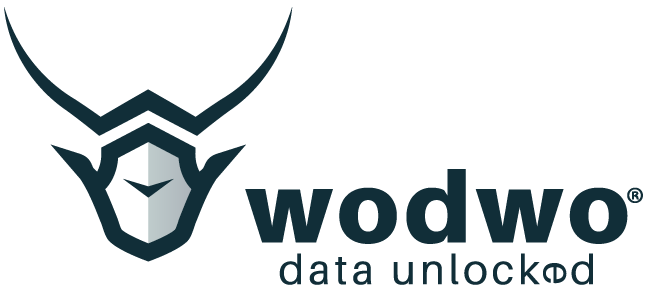
What is marketing automation, and how does it work? When you think of automated marketing, you might think of a computer program sending emails on your behalf. Or perhaps you picture ones and zeros moving on a screen spitting out social media updates, writing emails for you, or generating data reports. What marketing automation actually is lies somewhere in between, and in this post we’ll explore how implementing it can benefit marketing teams just like yours.
Understanding Marketing Automation
In its most basic sense, marketing automation refers to software that automates repetitive marketing tasks. This can include sending emails to clients and prospects, posting pre-written social media updates that you’ve scheduled to go live, and even personalized chatbots on your website.
The truth is a lot of marketers have so many tasks on their plate that they need to find a way to streamline and scale their work. While you could perform tasks manually, using marketing automation helps you get more done in less time. For example, you could set up a pre-configured workflow and triggers that do things like:
- Sending an email to a new lead that signs up for your newsletter
- Posting an image on Instagram with a pre-written caption
- Scheduling delivery of a welcome packet to a new client’s home
- Distributing SMS messages to customers when they order a product.
The possibilities are endless and they save significant time and resources compared to traditional marketing tactics.
Just a few of the benefits you will enjoy when you implement marketing automation are: increased efficiency, the ability to personalize content at scale, and enhanced customer engagement through behavioral-based lead nurturing.
Core Components of Marketing Automation

An effective marketing automation strategy relies on several key components:
- Customer Segmentation
- Email Marketing Automation
- Lead Generation and Capture
- Social Media Automation, and
- Analytics and Reporting.
Customer segmentation is crucial for relevant messaging. When you divide your audience into groups based on common traits and behaviors, you can craft targeted campaigns. Tools like Wodwo make this easier by leveraging AI to build customized lookalike audiences that mirror your best existing customers.
Email marketing automation enables drip campaigns and triggers for personalized content. Based on user actions, you can send tailored messages and offers.
For lead generation and capture, landing pages and forms are used to “grab” contact information while lead scoring automatically ranks prospects.
Social media automation involves scheduled posting and listening for engagement opportunities. With tools like Hootsuite or Buffer, you can load one or several months worth of content that automatically drips out at times you choose onto platforms such as Instagram, Facebook, LinkedIn, etc…
Analytics and robust reporting allow you to track campaign metrics and pivot based on data. Leveraging these reports enables data-driven decision-making. You can see what’s working and double down on those things, or if things aren’t working you can make changes in an effort to improve marketing campaign effectiveness.
Additional components may include website personalization, chatbots, and integrations with other systems like your CRM.
When these elements are coordinated, marketing automation creates a customized journey for each subscriber. The technology handles the details so you can focus on strategy and optimization.
How Marketing Automation Works

Rather than getting into the tech aspects of everything involved with making software work, we’ll keep it simple and say that marketing automation relies on collecting customer data from various sources like your website, email, social media, and CRM. This data gets integrated into the platform to build unified profiles.
You can then design workflows to map out automated campaigns for scenarios like onboarding, re-engagement and lead nurturing. These are configured using triggers and actions like sending a follow-up email if a prospect downloads a gated asset.
The integrated data enables personalization at scale. Email subject lines, social media ads, and website content can all be customized based on each user's profile and behaviors. Tools like Wodwo make this easier by leveraging AI to build hyper-targeted lookalike audiences for your campaigns.
Interactions are coordinated across channels to create a seamless experience. The platform ensures messaging stays consistent across touchpoints.
Automation handles the tedious details, freeing you up to focus on strategy. Adjustments can be made based on performance data to optimize engagement. With the right workflows in place, marketing automation creates personalized journeys adapted to each customer.
An Example of How Marketing Automation Can Work
- A visitor lands on your website from a Google ad. Their browsing behavior triggers a lead score in your marketing automation platform.
- Based on their score, they are automatically placed into a lead nurturing workflow. The first email in the workflow sequence is sent immediately welcoming them.
- The visitor clicks a link in the email leading to a landing page. This triggers the next email to be sent 3 days later with a discounted offer.
- They convert on the offer by filling out a form, which assigns them as a marketing qualified lead. This enters them into an email workflow for top-of-funnel leads.
- Form data automatically syncs with your CRM, updating their contact record. Their lead score adjusts higher based on the conversion.
- They are tagged to receive targeted content on social media based on their interests and engagement so far.
- If they have not progressed to a sales qualified lead, 30 days later they’re automatically sent the initial offer email again to re-engage.
- Upon becoming an opportunity in the CRM, they are nurtured by the sales team instead and excluded from further marketing automation.
- The marketing platform provides cross-channel analytics showing the effectiveness of each campaign and lead source they interacted with.
Implementing Marketing Automation

Where can you begin with implementing marketing automation in your business?
The first thing to note is that choosing the right platform is key for the success of your marketing automation efforts. For example, you'll want to evaluate factors like features, ease of use, integrations, and cost. Leading tools include HubSpot, Pardot, Marketo, and Ontraport.
Equally important is ensuring data privacy and compliance. Following data regulations like GDPR and CCPA is important not only to protect the data and privacy of your prospects and clients, but also to prevent your company from incurring fines for noncompliance. That said, you want to make sure to only collect opted-in data and minimize what you store. Partner with vendors like Wodwo that prioritize encryption and data security.
A phased rollout can help manage risk as you test automation workflows. Start with one channel like email before expanding features.
Ongoing optimization and adaptation based on data is vital. The goal is to balance automation with a human touch through tailored content, meaningful metrics, and insight-driven strategy.
Benefits of Leveraging Marketing Automation in Your Business
The top benefits of marketing automation include:
- Improved lead nurturing and conversions through behavioral-based, personalized communications
- Enhanced customer engagement due to relevant, tailored interactions
- Streamlined campaign management as automation handles routine tasks
- Increased efficiency and productivity by replacing manual workflows
- Better attribution from cross-channel analytics
- Higher ROI from data-driven optimization and spending fewer resources on repetitive tasks
Challenges and Considerations with Marketing Automation
It’s worth noting that while powerful, marketing automation does come with some risks. It's important to maintain a human touch through personalized content and genuine engagement. Over-automation can make customers feel bombarded and damage brand perception.
That’s why ongoing monitoring and adjustment of your workflows and triggers is crucial to optimize automated workflows. Use A/B testing and experiment with different triggers or segments. One way you can tell if your audience is no longer enjoying your efforts is to watch for red flags like spikes in unsubscribes.
You’ll also want to implement your marketing automation efforts in phases, and focus on quality over quantity. For example, it’s a good idea to avoid blasting everyone in your database - and, don’t message any one audience segment too often. It’s helpful to add surveys into your strategy to find out how frequently your audience wants to hear from you.
The most important piece of advice we can give you for any marketing you decide to do is top lead with value, not sales pitches. We all want to feel like we’re part of a conversation, not like we’re constantly being sold to. With the right strategy, marketing automation can drive growth through better relationships.
A Quick Recap
So, what is marketing automation? It’s the use of software to automate your most repetitive tasks to help you get more done in less time. From social media posting to email drop campaigns, marketing automation leverages customer data and workflows to deliver personalized messaging and experiences.
The primary benefits of implementing a marketing automation strategy in your business include increased efficiency, improved lead conversion through behavioral lead scoring, and enhanced customer engagement due to tailored interactions. If you are going to use it however, it's important to maintain a human touch and avoid over-automation.
When used strategically, marketing automation enables more effective marketing through coordinated cross-channel interactions customized to each prospect and customer. For today's growth-focused organizations, exploring tools like HubSpot and leveraging solutions like Wodwo for AI-powered audience modeling can help unlock the full potential of marketing automation to drive results. Implementing the right workflows and automation is a smart investment that allows teams to scale and optimize engagement.
Want to learn how you can use Wodwo to enhance your marketing automation efforts? We’d love to help you improve campaign effectiveness and improve your company’s bottom line. Click here to get a free demo today!


